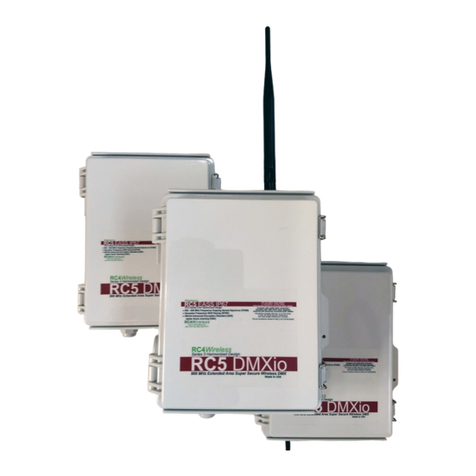
7
7
Conrming and Setting an RC4 System ID
All RC4Magic devices being used together must be set to the same RC4 System ID.
On power-up, the currently selected System ID is indicated with a blink pattern on
the DMX Data and COP indicators. The four dierent patterns are noted below.
The factory default ID0 is indicated with a few rapid blinks of the yellow DMX Data
LED on power-up. A factory reset will restore this ID setting.
An ID can be selected by holding one button on power-up. The blink pattern for the
newly selected ID will appear on the indicators. You can also conrm the currently
selected ID at any time by cycling power and watching the blink pattern that appears
at start-up with no buttons pressed.
To select an ID, press and hold the associated button, apply power, and release the
button when the blink pattern appears. For example, to select ID1, hold the ID1
button and apply power. When you see the green LED blink rapidly, release the
button.
All RC4Magic Series 3 devices indicate IDs in the same way, making it easy to
quickly conrm that all devices in your system are set correctly to work together.
ID0 (default), yellow blink. Hold the ID0 button on power-up to select.
ID1, green blink. Hold ID1 on power-up to select.
ID2, yellow and green blink together.
ID3 (public), yellow and green alternate.
Note: ID3 is public and is less secure than Private IDs.




























